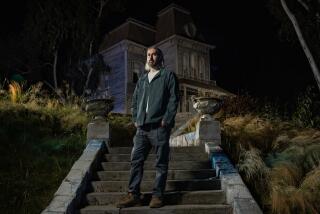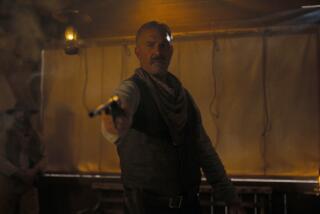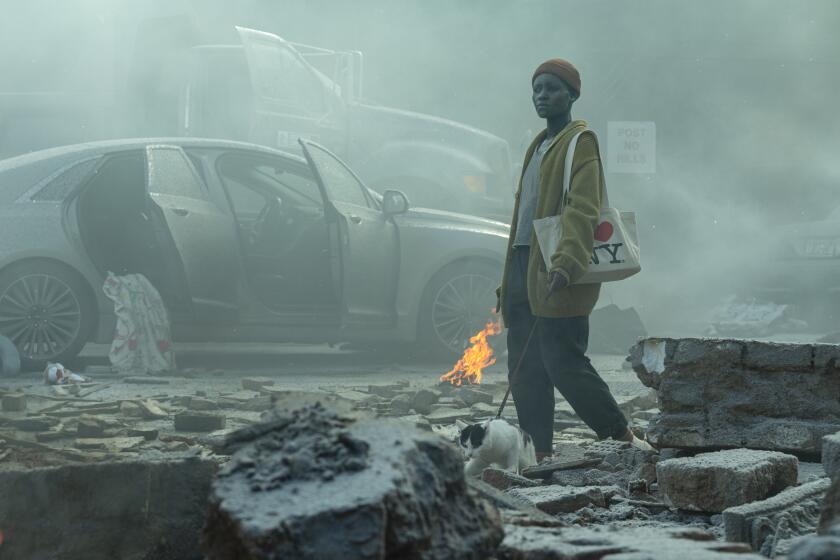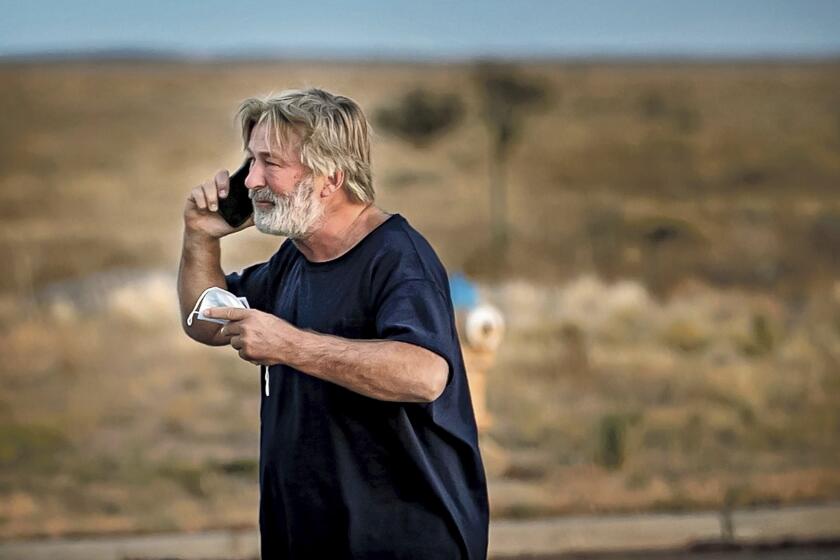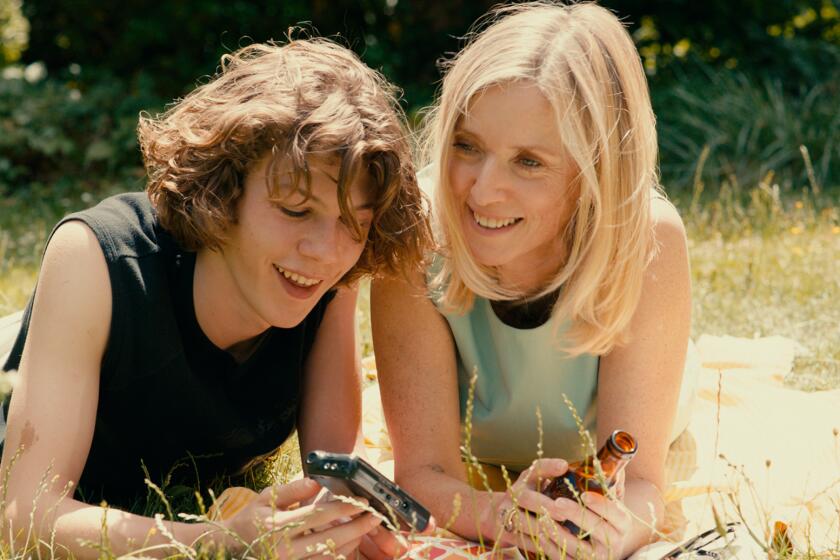COVER STORY : Gotham Owes Its Look to the Third Reich
Aside from Jack Nicholson’s high-camp turn as the Joker, the most attention-getting element of the 1989 “Batman” was the movie’s dazzling production design by British artist Anton Furst.
A dark, menacing netherworld at once futuristic and old-fashioned, Furst’s Gotham City quoted liberally from the entire spectrum of sci-fi classics from Fritz Lang’s “Metropolis” to Ridley Scott’s “Blade Runner.” What made Furst’s vision unique, however, was the way he tempered this operatically grand style with a subtle whiff of cartoonish whimsy. For “Batman Returns,” however, Burton wanted to come up with a different look so he turned to someone he knew was on his wavelength.
“When Tim offered me the job my first question was ‘What about Anton’s work?’ ” recalls production designer Bo Welch, who was responsible for the distinctive look of Burton’s “Edward Scissorhands” and “Beetlejuice” (where he met actress Catherine O’Hara, whom he married last month). “Tim said ignore it and start from scratch, and that’s what I did.”
Welch was relieved to hear that Burton didn’t envision “Batman Returns” as a sequel and that he was free to take the look of the film in a new direction because he found aspects of the first film unsatisfying.
“I wanted to give it a different feeling because I didn’t really enjoy the last ‘Batman’ that much,” says Welch, swigging from a bottle of mineral water during an interview at a Hollywood hotel. “The look of the film was strong and the Joker was an enjoyable sketch, but the movie didn’t have Tim’s personal stamp, which is a mixture of the morbid, the profane and the ordinary combined to create a kind of bizarre fairy tale.
“One thing I tried to do was give the film a bigger feeling because the city in ‘Batman’ didn’t feel big to me--it didn’t have the power an old American city has,” adds Welch, who was born in Pennsylvania and received a degree in architecture prior to relocating to Los Angeles 16 years ago and breaking into movies as a set designer at Universal. “To create that feeling of power I structured the look of the film on a grid of strong vertical lines that are slightly skewed because lines that are out of square create a feeling of tension. Emphasizing the vertical--which is done by making Gotham a jungle of skyscrapers--feels heavy and gives you a sense of victimization and of being crushed. These huge skyscrapers transform the city streets into dark canyons and that’s why there’s no light in Gotham. I see Gotham as a metaphor for America today and I wanted it to have a feeling of decaying Americana.”
Students of art history will have no trouble pinpointing how Welch researched the film, as the look of “Batman Returns” has clear links with the fascist architecture of the Third Reich, as well as with the American Precisionist painters of the ‘20s. (Precisionism was a quasi-Cubist school that employed hard outlines, solid shadows and slick, impersonal surfaces in an attempt to endow commonplace and industrial subjects with epic or heroic character.) “The work of Charles Sheeler really stuck in my mind when I was working on coming up with an approach for this film,” says Welch, “and Georgia O’Keeffe’s cityscapes of New York impressed me as well.
“In preparing for the film, however, the first question I asked myself was how can I create a visual expression of corruption and greed? That got me thinking about the fascistic architecture employed at world’s fairs--that feels corrupt because it’s evocative of oppressive bureaucracies and dictatorships--so I looked at a lot of Nazi art and images from world’s fairs.”
Asked if he intends that the movie have a cartoonish feeling, Welch says “inasmuch as cartoons are caricatures, yes--I see the movie as a collage of archetypes. One of the reasons Tim and I work well together is that we’re both intrigued by the idea of taking cartoon concepts and giving them a finish that lends them a degree of weight and reality, even though they’re far-fetched.”
Welch began and finished his work on “Batman Returns,” which was mostly shot on soundstages, in just over a year, so it’s not surprising to hear him say that “getting the work done on time was the most challenging aspect of the job. Having already done three films together, Tim and I are pretty much in sync so we were able to hit the ground running, and that’s the only thing that made doing a film of this scale in the amount of time we had feasible.”
As to how much money they gave him to play with, Welch says he doesn’t know--”I don’t even know the budget of the film,” he innocently insists. He will concede, however, that the most expensive set was Gotham Plaza, the town’s municipal center.
“It was the most expensive because it was the most rushed, and the faster you want something the more it costs.”
Gotham Plaza may have cost the most, but for Welch, the most creatively satisfying set was the Penguin’s Lair, which he describes as “a huge subterranean Arctic animal show arena. It’s large, majestic and operatic, yet seedy. It involved half an acre of water, and the lighting effect of the rippled water bouncing off the ceiling, the cavernous quality and weird angles, the huge air conditioner, and bleachers and thousands of penguins--the Penguin’s Lair uses every movie trick in the book.
“But the greatest trick is still a skillful actor in a costume in a great setting,” says Welch. “Those three simple elements take you back to the roots of storytelling.”
More to Read
Only good movies
Get the Indie Focus newsletter, Mark Olsen's weekly guide to the world of cinema.
You may occasionally receive promotional content from the Los Angeles Times.
